

Exoskeleton partially coated with stem cells for infarcted myocardium repair
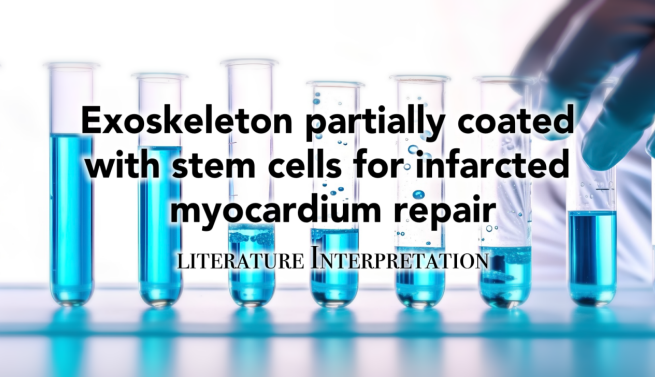
Over the past few decades, many efforts have been made in tissue engineering, with cell-based therapies covering nerve, bone, cartilage and heart tissue. In particular, stem cells have complex functions, including homing, exocrine capacity, signal transduction, and regeneration with low immunogenicity. Cardiovascular disease is the leading cause of death worldwide, killing about 17.9 million people each year. Studies of cardiac therapies have focused on cell-based therapies to stimulate endogenous regenerative mechanisms. However, many clinical trials have ended with limited efficacy.
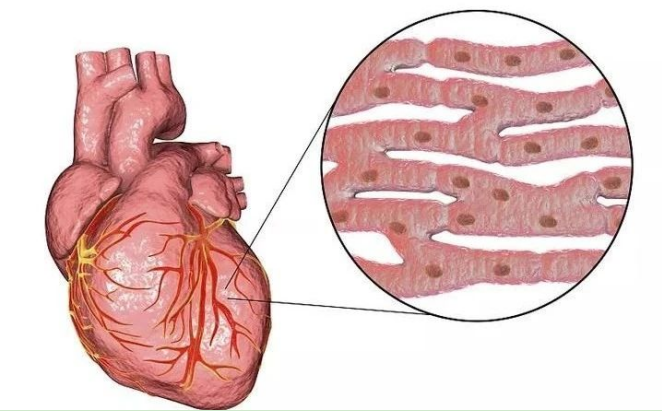
Studies have shown that stem cell therapy has a positive effect on infarcted hearts. Better results have been achieved using cell pretreatment or in combination with biomaterials. Similar to all mammalian cells, stem cells are fragile and very sensitive to adverse conditions. Loss of adherent stem cell matrix leads to cell death and is a major obstacle to survival of transplanted cells in vivo. Cells that remain in cardiac tissue may be destroyed by a deleterious microenvironment, such as elevated reactive oxygen species (ROS). After transplantation, more than 90% of stem cells die within 24 hours. Cellular applications of biomaterials, such as scaffolds or sheets, can facilitate cell transplantation, but should be performed during traumatic and dangerous thoracotomy or catheterization, limiting the scope and frequency of application. In addition, cell delivery to the blood system requires resistance to cell membrane damage from hemodynamic forces and shear stresses, which may also deprive less robust cell surface modifications. Therefore, there is an urgent need for a new cell therapy platform that promotes cell survival with minimal invasiveness.
On November 14, 2023, the team of Zhejiang University School of Medicine, Zhejiang Province Clinical Research Center of Oral Diseases, Zhejiang Province Key Laboratory of Oral Biomedical Research, and Zhejiang Province Oral Biomaterials and Device Engineering Research Center published online in the journal ADVANCED MATERIALS. “Exoskeleton Partial-Coated Stem Cells for Infarcted Myocardium Restoring” The team found that partially coated MSCs showed enhanced cell retention in infarcted myocardium by noninvasive intravenous injection. The repair of myocardial infarction can be achieved by improving cardiac function, myocardial angiogenesis, proliferation and inhibiting apoptosis. This discovery facilitates the elucidation of the underlying molecular and cellular mechanisms of cell-exoskeleton interactions, and facilitates the rational design and manufacture of next-generation nanobiological hybrids.
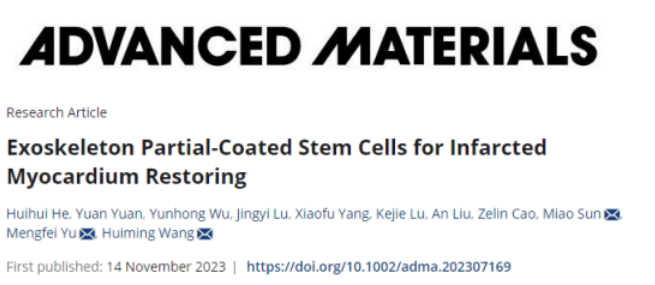
Exoskeleton composed of metal-organic scaffolds can produce BMSCs, which can overcome the low probability of survivability of cell-based therapies. Partially coated exoskeletons can promote the survival of suspended MSCs by integrating the support and undamaged cellular properties of the exoskeleton. In addition, some exoskeletons are protective against harmful environmental conditions, including reactive oxygen species, pH changes, and osmotic pressure. During cell therapy, partially coated cells exhibit enhanced intercellular adhesion, leading to aggregation and adhesion, promoting cell survival and preventing cell escape. Johnson & Johnson Exoskeleton interacts with cell-surface receptors integrin α5β1 to enhance biological function through beneficial gene expression alterations such as Vegfa, Cxcl12, and Adm.
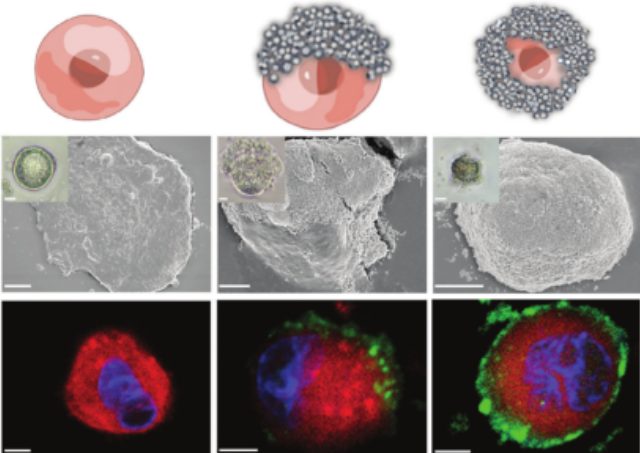
Partial Exoskeleton Coating Promotes Suspension Cell Survival
The research team used Zeolite imidazolate-frame-8 (ZIF-8) nanoparticles (NP) are partially coated with bone marrow stem cells (BMSCs). The partially coated shell allows cell adhesion, diffusion, and signaling, The probability of survivability of partially coated and partially coated exoskeleton was investigated. The exoskeleton induces a series of beneficial signaling changes that favor cell survival and tissue regeneration. The recovery of infarcted myocardium is achieved by noninvasive and simple intravenous administration, which increases the probability of survivability and partial retention of encapsulated cells. The study also provides a deeper understanding of the practical biomedical applications of exoskeleton-cell hybrids.
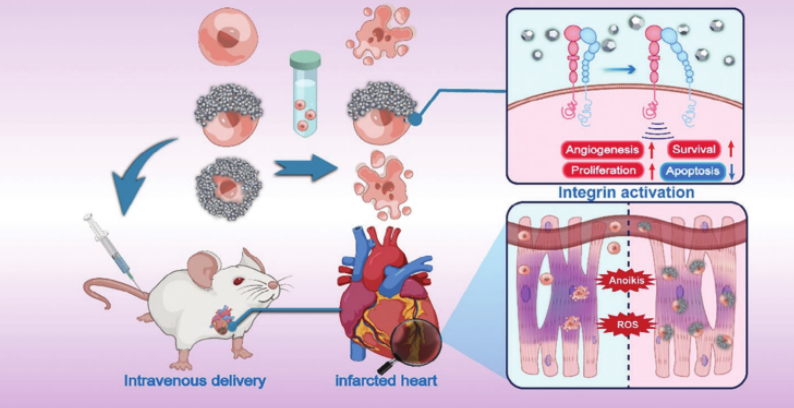
Schematic diagram of experimental principle
In summary, partially coated bone marrow mesenchymal stem cells can be prepared as scaffold-free cell materials, and partially exoskeletons serve as a protective support to maintain cell survival in suspension environments where functional cells are subject to demanding applications such as injectable cell therapy and3D bioprinting. By combining micro and nano engineering with cell biology, partially exoskeleton coated cells obtained enhanced adhesion and enhanced biological function. Exoskeleton-mediated manipulation of the biological properties of encapsulated cells helps elevate artificial exoskeletons from inert protective shells to active contributors to biological interactions.
Literature Information:
Document Title: Exoskeleton Partial-Coated Stem Cells for Infarcted Myocardium Restoring
Journal: Advanced Materials
Impact Factor: 29.4
College of Medicine, Zhejiang University
Paper Links: https://doi.org/10.1002/adma.202307169
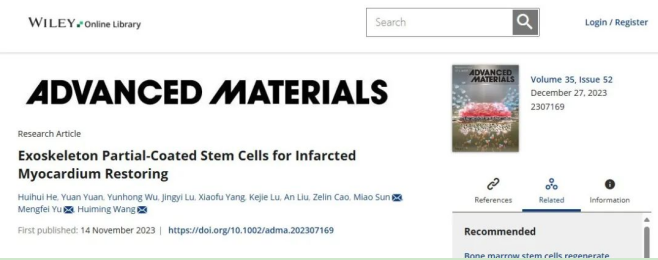
Reference Help products
ELK2320 Enzyme-linked Immunosorbent Assay Kit for Rat Vascular Endothelial Growth Factor A (VEEA)
ELK2524 ELISA Kit for Detection of Rat Stromal Cell-Derived Factor 1 (SDF1)
ELK4877 Rat adrenal gland medulla (ADM) ELISA Kit
This article is based on ELK Biotechnology.
Read 34


